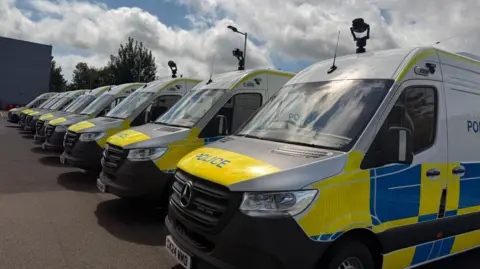The expansion of police use of facial recognition technology is making headlines as the UK government announced a rollout of new live facial recognition (LFR) vans across several police jurisdictions. This initiative, which aims to enhance law enforcement capabilities, is set to equip seven police forces in England with better tools to help locate suspects wanted for serious crimes including violent assaults, sexual offenses, and even homicides.
The Home Office’s announcement specifies that these new vans will be outfitted with advanced camera technology capable of scanning the faces of individuals passing by and matching them against a pre-defined list of wanted persons. According to reports, the use of such technology has already yielded significant results in London, where 580 arrests have been made over the course of just twelve months. Among these arrests were 52 individuals identified as registered sex offenders who had breached their parole conditions.
However, the rapid expansion of this surveillance technology has sparked considerable concern among civil liberties groups. The campaign organization Big Brother Watch has expressed alarm over what it perceives as a “significant expansion of the surveillance state” in the UK. Highlighting potential abuses of power and privacy violations, critics argue that the widespread deployment of LFR systems may lead to unwarranted monitoring of citizens, inadvertently surveilling innocent individuals without substantial justification.
The use of live facial recognition technology is not new to England and Wales; its initial application dates back to 2017 during a high-profile event, the UEFA Champions League final held in Cardiff. Since then, deployment has generally been restricted to specific areas such as South Wales and London, extending to significant events like concerts for artists including Beyoncé, aimed at identifying suspected criminals.
With the current effort, the government plans to provide an additional ten LFR vans, effectively doubling the number of such vehicles in operation. The police forces set to benefit from this technology include Greater Manchester, West Yorkshire, Bedfordshire, Surrey, Sussex, Thames Valley, and Hampshire. Each van will come with trained personnel to ensure accurate readings of the facial recognition software, which identifies individuals based on facial features, such as the distance between their eyes and the length of their jawline.
In conjunction with the rollout, the government is simultaneously initiating a consultation to explore the necessary safeguards for this type of surveillance. Home Secretary Yvette Cooper emphasized that regulations must be established to ensure transparency and instill public confidence in the technology’s deployment, especially before its wider application. She assured that police departments would utilize LFR technology carefully, targeting only the most dangerous criminals who remain elusive.
However, advocacy groups continue to voice their concerns regarding the ethical ramifications of deploying this form of surveillance. Rebecca Vincent of Big Brother Watch highlighted that the absence of clear legislative backing for such invasive technology could led to its unchecked proliferation. The group is taking legal action against the Metropolitan Police’s use of LFR technology, asserting that robust regulatory frameworks must precede any further expansions.
Furthermore, Charlie Whelton from Liberty called attention to the importance of placing appropriate legal structures in place prior to further police enhancements with facial recognition technology. As the discussion continues, police representatives and government officials assert that they remain committed to ethical practices, adhering to the College of Policing’s guidelines and the Surveillance Camera Code of Practice.
In a significant development for community policing, the Home Office has also fulfilled its manifesto pledge to assign named officers to every neighbourhood across England and Wales. This initiative aims to enhance community engagement and ensure that citizens have a reliable point of contact within their local law enforcement agencies. The new structure will enable residents to easily locate their designated officers through police force websites, facilitating prompt responses to public inquiries and fostering greater accountability among officers.
As these developments unfold, the implications of expanded facial recognition technology and community-policing efforts remain of paramount concern to both supporters and critics of this initiative. The balance between law enforcement efficacy and civil liberties continues to be a contentious issue in the evolving narrative of modern policing in England.











